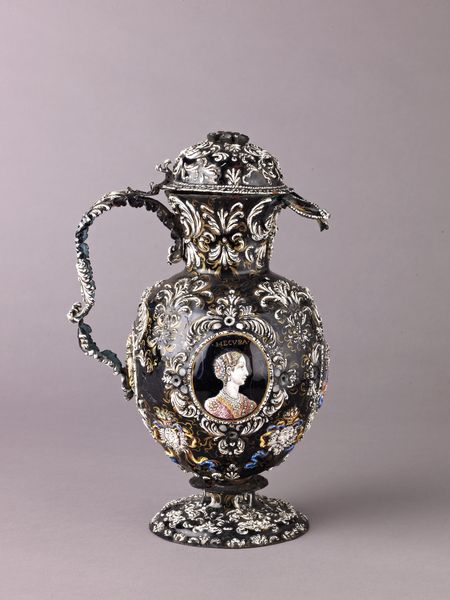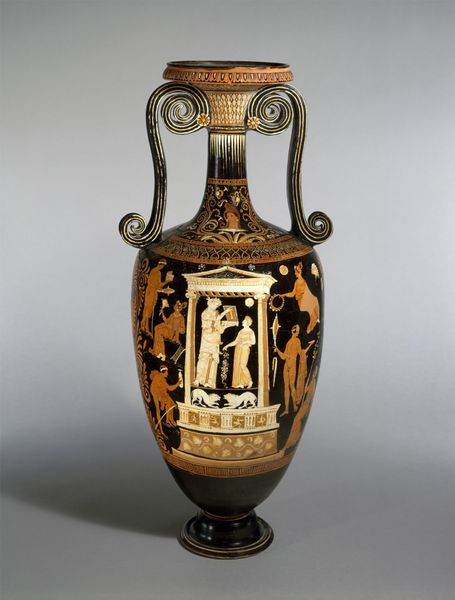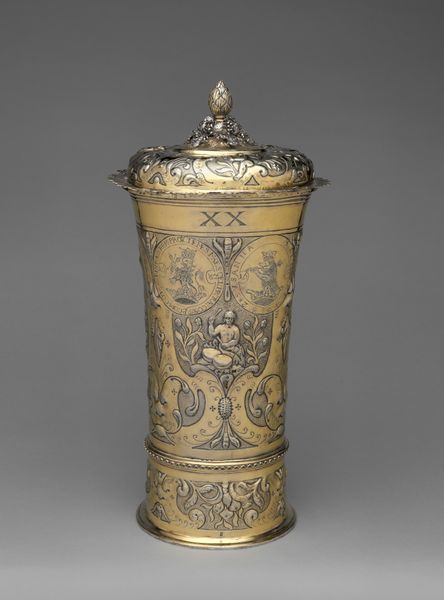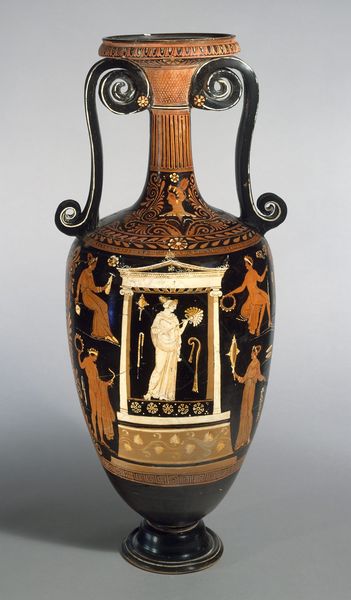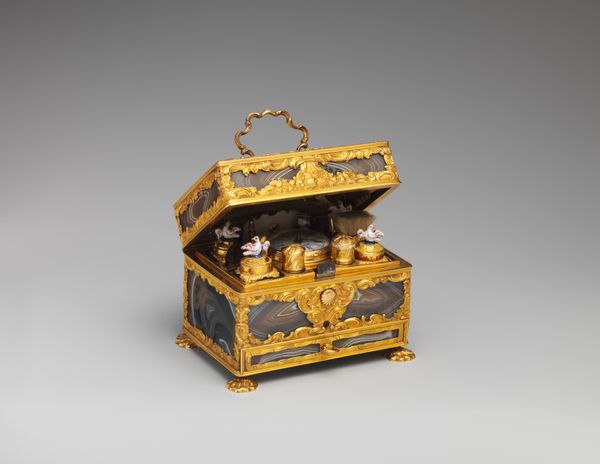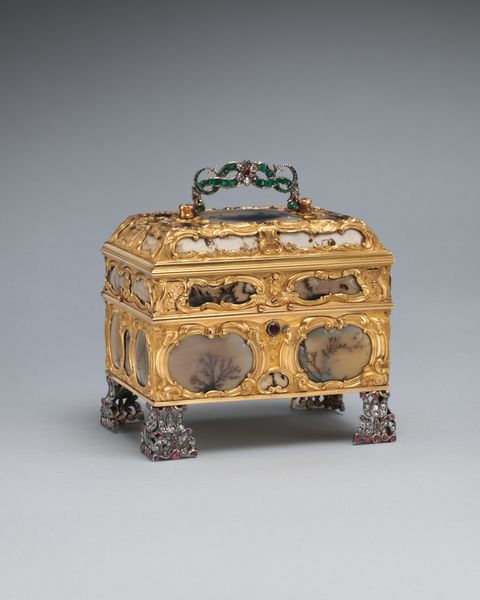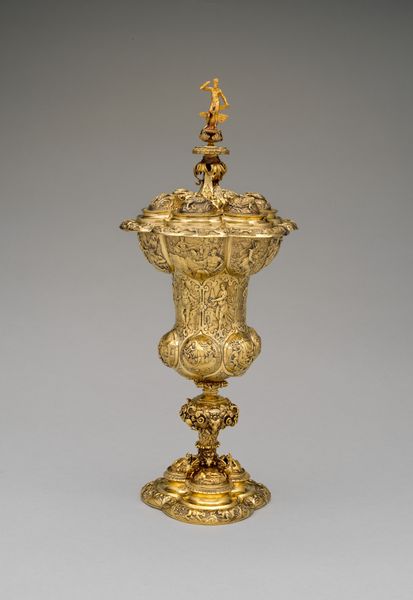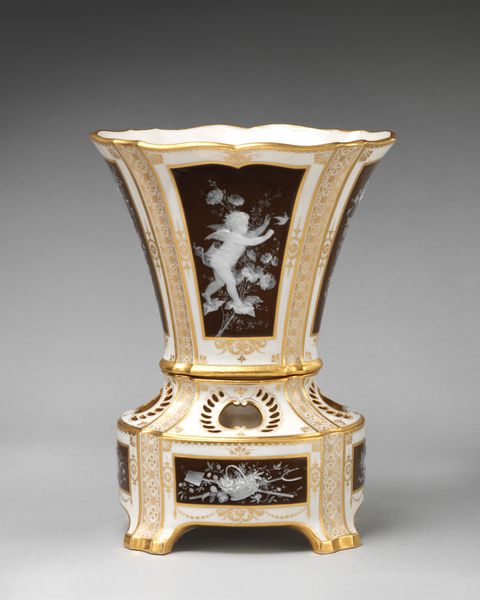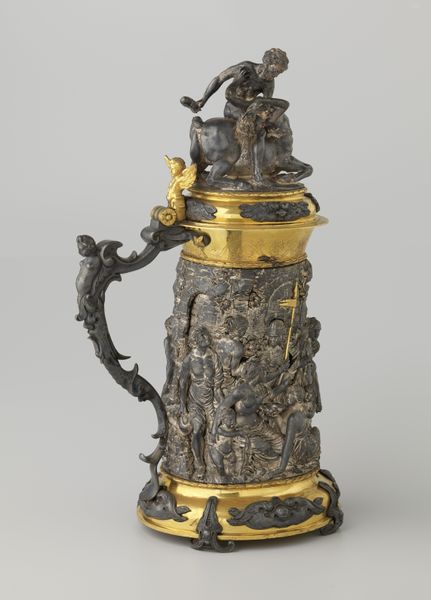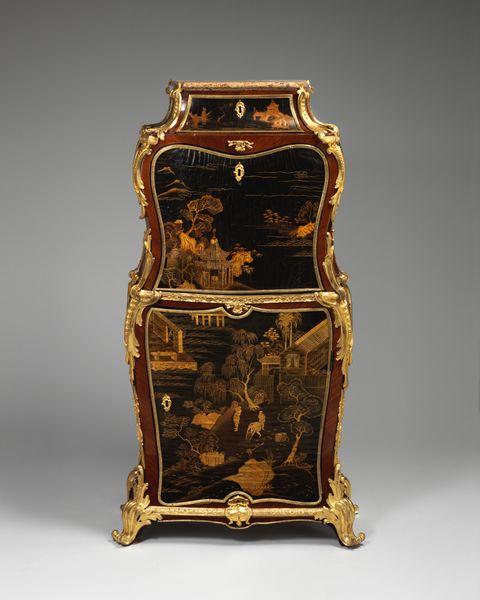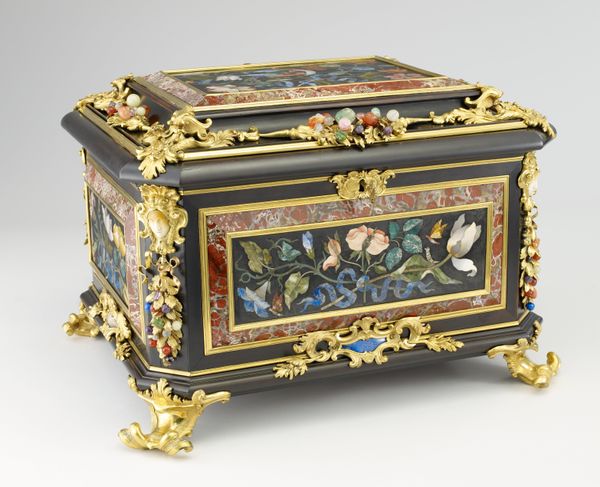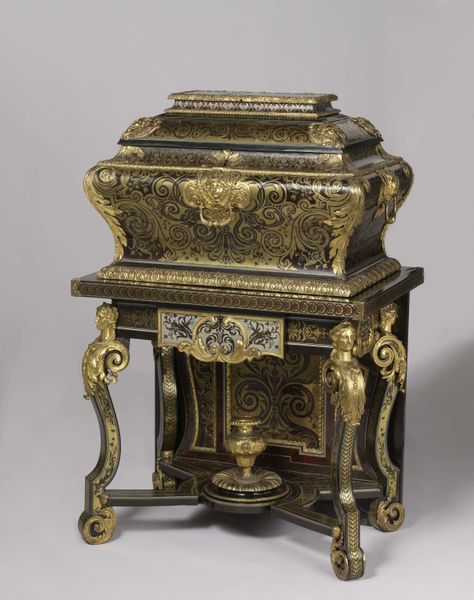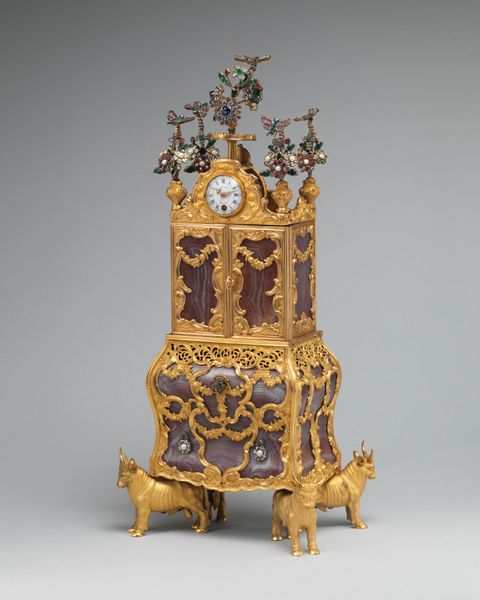
ceramic, porcelain, sculpture
#
landscape
#
ceramic
#
porcelain
#
figuration
#
stoneware
#
sculpture
#
ceramic
#
decorative-art
#
rococo
Dimensions: Height: 7 in. (17.8 cm)
Copyright: Public Domain
Curator: Here we have a teapot, part of a service, created between 1745 and 1760 by the Doccia Porcelain Manufactory. It's currently housed at the Metropolitan Museum of Art. Editor: It strikes me immediately as playful. The pastel yellows and that charming, slightly grotesque lizard handle – it’s like a visual riddle about the elite's idea of "rustic" leisure. Curator: Exactly! The rococo style is all about elaborate ornamentation and playful themes, but there's also the symbolic layer. Consider the putti frolicking in the landscape. These figures, often associated with love and innocence, are a recurring motif symbolizing idealized childhood and carefree existence. It evokes a longing for a golden age, doesn’t it? Editor: Perhaps, but let’s not forget it’s porcelain. This wasn’t made to actually withstand hard labor; it’s a delicate status symbol. Think of the raw materials, the skill of the artisans involved in mining, processing, molding, firing, and decorating. All that labor is concentrated into an object meant for an aristocratic tea table. The idyllic scene is then just a façade, covering the reality of production and consumption. Curator: A valid point. And beyond the immediate surface of the putti playing, this kind of imagery served as a reminder of classical virtues and cultivated leisure that the elite wanted to associate themselves with. It's like they're trying to imbue their daily rituals with deeper cultural meaning through these artistic choices. Editor: Absolutely. The decorative arts often become complex sites of negotiation. They reinforce social structures but also provide avenues for new materials and labor practices to enter the upper class life. Curator: Indeed, and while we admire the beauty of this object, it reminds us to question its symbolic meanings and appreciate the multifaceted story this single porcelain teapot whispers about its world. Editor: A delicious and bitter cup of tea indeed.
Comments
No comments
Be the first to comment and join the conversation on the ultimate creative platform.
